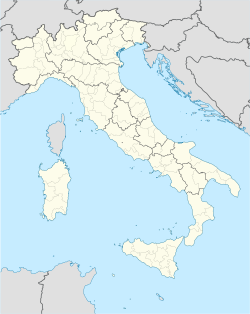You can help expand this article with text translated from the corresponding article in Italian. (January 2024)Click [show] for important translation instructions.
|
Porto Empedocle | |
|---|---|
| Comune di Porto Empedocle | |
 Porto Empedocle in the background | |
 Position of the municipality of Porto Empedocle in the Free Municipal Consortium of Agrigento | |
| Coordinates: 37°18′N13°32′E / 37.300°N 13.533°E | |
| Country | Italy |
| Region | Sicily |
| Province | Agrigento (AG) |
| Government | |
| • Mayor | Calogero Martello (FI) |
| Area | |
• Total | 25.23 km2 (9.74 sq mi) |
| Elevation | 2 m (6.6 ft) |
| Population (31 May 2025) [2] | |
• Total | 15,389 |
| • Density | 609.9/km2 (1,580/sq mi) |
| Demonym | Empedoclini |
| Time zone | UTC+1 (CET) |
| • Summer (DST) | UTC+2 (CEST) |
| Postal code | 92014 |
| Dialing code | 0922 |
| Patron saint | Saint Gerland of Agrigento |
| Saint day | February 25 |
| Website | Official website |
Porto Empedocle (Sicilian : 'a Marina) is a town and comune in Italy on the coast of the Strait of Sicily, administratively part of the province of Agrigento. It was named after Empedocles, a Greek pre-Socratic philosopher and a citizen of the city of Akragas (present-day Agrigento), in his day a Greek colony in Sicily. The primary industries of Porto Empedocle are agriculture, fishing, ironworking, pharmaceuticals and rock salt refining.












